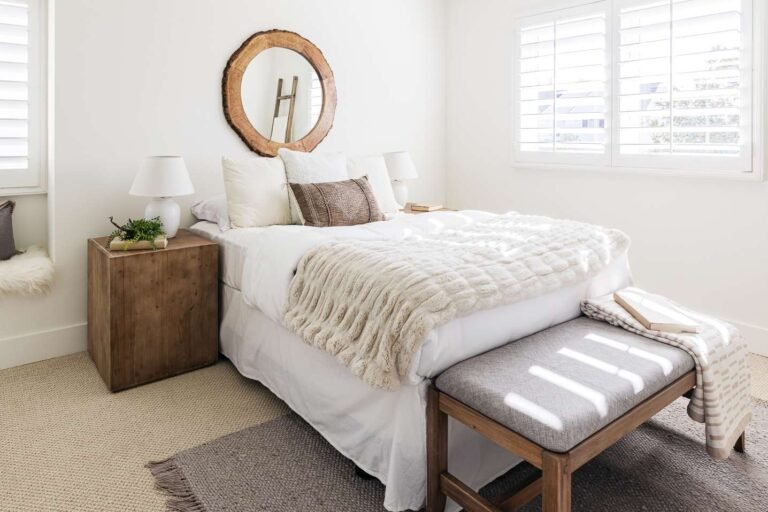Raised beds were originally for royalty, wealthy and revered. Have you heard of the Chinese wedding bed? The style is a hand-crafted platform bed with a canopy and surround, made from massive beech, rosewood, or mahogany. They are mostly enclosed and highly ornamental.
Egyptian history, etched into stone thousands of years ago depicts raised beds for deities. Those who could afford them to be crafted adorned them with fabrics and cushions. The masses slept on the ground or straw.
First modern humans started using beds for comfort, security and to keep the dog’s cold nose out, 77,000 years ago.
Historians can debate which came first, but wherever you sleep is your bed. The first flat sheet is thought to have been constructed of thick yarn in Egypt around 1000. Before this straw mats. Earlier still and even today, animal hides.
The term bed sheet was first used in the late Middle Ages and early renaissance. Silk, linen and cotton bed sheets in diverse colours and patterns to accentuate decor were used. Thread count has been the gauge for quality and comfort feel since the loom was invented.
Thread count is how most people today communicate when discussing bedding. Egyptian cotton is still considered the best-sourced material for this application. The weave of a fabric varies in the relationship between the warp and welt, or cross-weave pattern.
- Muslin in a plain weave cotton fabric from delicate to coarse. Discovered in Sonargaon, now an area of Bangladesh, renowned to this day for it quality and quantity of fabrics.
- You should recognize flannel when you see it. It is ubiquitously used for bedding and clothing fabric. Flannel can be of diverse fineness and feel. Made of wool, yarn, cotton, or synthetic fibre, Flannel is commonly used to define any tartan or plaid patterns.
- Sateen is a yarn spun using the weave structure of satin. It has attributes of silk but less expensive. Machine washability and minimal drying shrinkage make this a popular choice.
- Percale can be identified by its plain weave and tighter twill. This material washes well and is firmer than most.
Skip to the next paragraph if you do not want to read about the creepy history of the pillow. Comfort was not a consideration initially. Unless by “comfort” you mean; keeping bugs from crawling in your ears and mouth while you sleep. The stone pillows were expensive due to the craftsmanship needed to create smooth contact surfaces. Only the elite had them.
The Chinese believed soft pillows to be a thief of energy. Similar to a tick as a mattress, Romans made the first soft pillows, but not until the 19th century did they become common.
Material and chemical science provide any density or shape of pillow you can dream of now. They can be printed to suit. Natural fillers are used to control temperature or offer herbal healing while you dream.
The importance of comfort during sleep has been recognized by innovation over thousands of years. You should always awake feeling rested. Keep looking until you create your combination.

